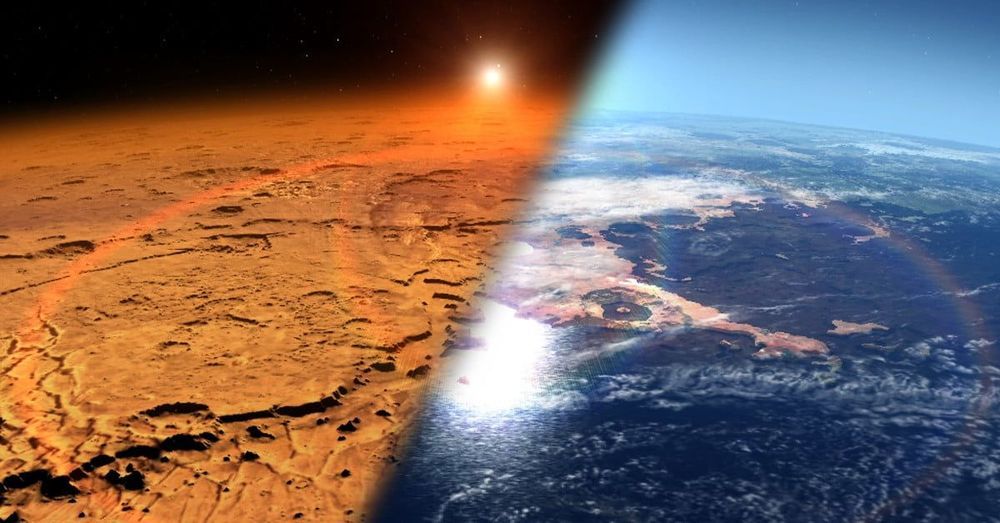Here on Earth, you can see the aurora of the Northern Lights, when solar winds interact with the planet’s magnetosphere. It turns out that Mars has its own auroras too, called proton auroras, but they give off ultraviolet light which makes them invisible to the naked eye.
NASA’s MAVEN (Mars Atmosphere and Volatile EvolutioN) spacecraft, however, currently in orbit around Mars, is able to detect these auroras using its Imaging UltraViolet Spectrograph (IUVS) instrument. Using data from this instrument, scientists have been investigating the relationship between the proton auroras and the fact that Mars lost its water over time. The Martian aurora is indirectly created by hydrogen in the atmosphere, which comes from water being lost into space.
The animation below shows how the proton aurora is formed. First, solar winds send protons toward Mars, where they interact with a cloud of hydrogen surrounding the planet. The protons take electrons from the hydrogen atoms to become neutrons. These neutral particles can then pass through a region of the planet’s magnetosphere called the bow shock. When the hydrogen atoms enter the atmosphere and collide with gas particles, they give off the ultraviolet light that we call an aurora.









Comments are closed.